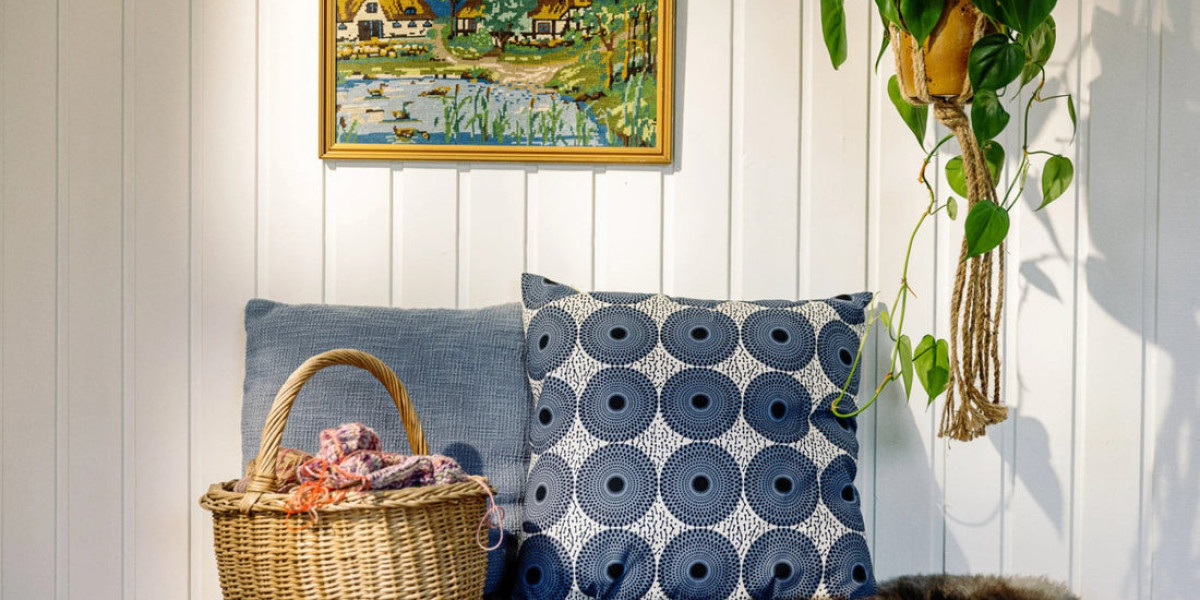Decorating your home doesn’t have to be expensive or environmentally harmful. In fact, some of the most creative, stylish, and personal spaces are designed with sustainable practices in mind. Recycled Home Decor is more than a trend—it’s a mindful lifestyle choice that helps reduce waste, save money, and turn ordinary items into extraordinary design statements. If you're new to the world of upcycling and eco-friendly styling, this beginner’s checklist will help you start your journey with confidence and creativity.
1. Understand the Value of Recycling in Home Decor
Before diving into your first project, it’s essential to understand why recycling matters. Every year, tons of materials like glass, wood, metal, and plastic end up in landfills when they could easily be repurposed into functional or decorative home pieces.
Recycled decor doesn’t just help reduce environmental impact—it also fosters a deeper appreciation for the story behind each item. You’re not just decorating; you’re giving something a second life. This mindset shift is the foundation of every successful recycled decor project.
2. Start Small: Choose Manageable Projects
As a beginner, it’s easy to get overwhelmed by elaborate DIY ideas you see online. The key is to start small and simple. Think picture frames made from reclaimed wood, glass jars turned into lanterns, or old t-shirts repurposed into cushion covers.
Pick one area in your home to begin with—maybe a side table in the living room or a kitchen shelf. Focus on transforming one piece at a time instead of overhauling your entire space.
3. Gather Your Materials—Sustainably
Your home is full of hidden treasures. Old furniture, glass bottles, worn-out clothes, and outdated accessories are great candidates for upcycling. Ask friends and family if they’re discarding anything, or visit local thrift shops, flea markets, and garage sales.
Keep a few basic tools handy: a glue gun, sandpaper, paintbrushes, nails, screwdrivers, and non-toxic paint or varnish. These will make your DIY journey smoother without needing a full-blown workshop.
4. Learn the Basics of Cleaning and Prepping
Before using any recycled item, especially second-hand pieces, clean and sanitize them thoroughly. For example, soak glass jars in warm soapy water to remove labels, or wipe down wooden furniture with vinegar and water before sanding.
Proper prep work ensures your creations last longer and look polished. It’s tempting to skip this step, but it makes a huge difference in the final product.
5. Get Inspired, But Stay Authentic
Pinterest, Instagram, and YouTube are goldmines for creative ideas. Search for beginner-friendly tutorials, and take note of materials you already have that can be repurposed similarly.
However, don’t feel pressured to copy someone else’s style exactly. The magic of Recycled home decor lies in its uniqueness. Each project should reflect your personal taste and the resources available to you.
6. Think Functionality and Aesthetics
When planning your decor, think beyond aesthetics. Ask yourself: Can this item serve a useful purpose? Can that vintage ladder become a bookshelf? Could those glass bottles serve as hanging planters?
Combining function with beauty is what makes recycled decor stand out. You’re not just making your space pretty—you’re making it smart, eco-conscious, and livable.
7. Mix and Match Materials
Don’t limit yourself to just one type of material. Mixing wood with metal, glass with fabric, or rope with ceramics can add texture and depth to your decor. Experimenting with contrasts often leads to unexpectedly charming results.
For example, an old wooden crate can be fitted with castor wheels and a cushion to become a stylish rolling ottoman. Or rusty spoons can be bent into hooks for a rustic kitchen organizer.
8. Embrace Imperfection
One of the most freeing aspects of recycled decor is that it doesn’t have to be perfect. Scratches, faded colors, and mismatched elements add character and tell a story. These flaws are what make your home feel warm, lived-in, and authentic.
Perfection is overrated. Let your projects evolve naturally. Even “mistakes” can lead to design breakthroughs.
9. Keep Safety in Mind
If you're working with old wood, be mindful of nails or splinters. When dealing with paint, always check if the item was previously coated in lead-based paints—especially for vintage furniture.
Use protective gear like gloves, masks, and goggles when necessary. Eco-friendly doesn’t mean risk-free, so take precautions while cutting, sanding, or sealing materials.
10. Practice Patience and Persistence
Like any DIY endeavor, recycled decor requires patience. Your first few projects might not turn out exactly how you imagined, and that’s okay. What matters is learning from each attempt and enjoying the process.
Eventually, you’ll build confidence, sharpen your eye for reusable materials, and even develop your own design style rooted in sustainability.
11. Celebrate the Results
Once your first recycled piece is finished and placed in your home, take a moment to appreciate your work. Snap a photo, share it with friends, or post it online to inspire others.
Recycled decor isn't just about creating a beautiful space—it’s a lifestyle that promotes mindfulness, creativity, and environmental responsibility. Each item you transform is a quiet statement of change, showing that stylish living and sustainability can go hand in hand.
12. Keep Expanding Your Skills
As you gain confidence, move on to slightly more advanced projects. Try reupholstering chairs, building shelves from pallets, or crafting lighting from tin cans. The world of recycled decor is endless, and there’s always more to explore. Workshops, online courses, and community groups are great places to connect with like-minded enthusiasts and learn new techniques. Keep evolving and experimenting.
Final Thoughts
Your home is a canvas, and every recycled piece you create adds a layer of meaning and intention. Whether it’s a hand-painted vase or a bookshelf made from crates, your efforts reflect both creativity and care for the planet. By following this checklist, you’re not just decorating—you’re making conscious, impactful choices that contribute to a more sustainable lifestyle. Start small, stay inspired, and let your journey in Recycled Home Decor grow with you.













